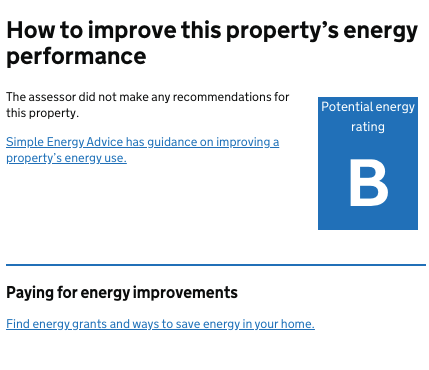
epcChelsea.com is a trading name of WeKnowHow Ltd. All bookings are made through our parent company website Weknowhow.co.uk
How to read an EPC report
An Energy Performance Certificate (EPC) is a legal document showing the rating of a home. The EPC report is split into the following sections in order to make it easier to read through. This document can also be shared by email, link or print.
Energy Performance Certificate
This first section displays the address of the property, the rating given by the assessor validity date and certificate number, property type and approx sq metres. If you notice anything is incorrect here please notify the assessor immediately. Note size will differ between assessors and valuers due to the tools and the way properties are measured. Small differences make no difference to your final sales price.
.
Rules on letting
Only properties which have an energy rating between A to E can be let, unless the property is exempt. Please refer to MEES for landlords for more info. or guidance for landlords on the regulations and exemptions.
.Energy Efficiency Rating
This illustrates the energy rating of the property. Therefore the higher the number in the 'current' column the more energy efficient the property is and likewise the lower the number means, the less efficient the property is. The number in the’ potential’ column is based on recommendations by the EPC assessor and the SAP software which appear later in the EPC report.
Breakdown of Energy Performance
Details all the elements of a home that the assessor could record by taking into account walls, windows, main heating, heating controls, hot water, lighting,.roof and any secondary heating as well as providing details of the primary energy usage is KWH.
Environment Impact
Property's impact on the environment in terms of carbon dioxide (CO2) emissions based on standardised assumptions about occupancy and energy use. Comparisons are made between what an average household produces and what your current property produces and what it potentially can produce within the recommendations (if any).
Improvements
A quick summary of actions you could take to improve this property. In some cases grants may also be available. If there are no recommendations well you are one of the lucky ones!.
Estimated Energy Costs & Savings
This aims to show the estimated energy costs & savings over a year of running a home of this size, taking into account the thermal properties of the roof, walls and floor as input by the DEA. These figures do not take into account the size of the family, living in the property or even what their average usage of heat and light would be and are pre-determined in the SAP methodology
Assessor contact and accreditation details as well as assessment date
Previous certificates
The final section links any previous certificates on this property









